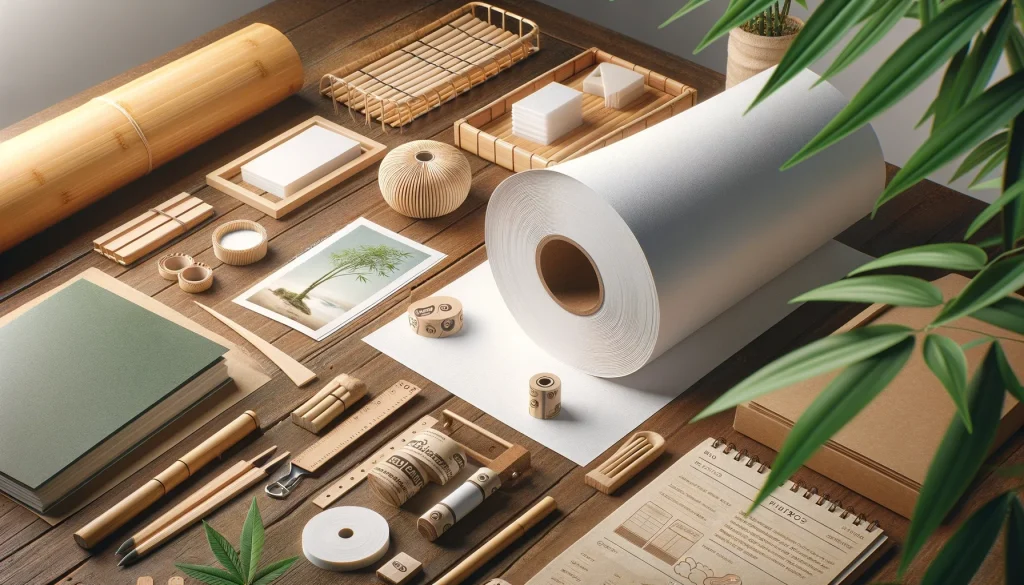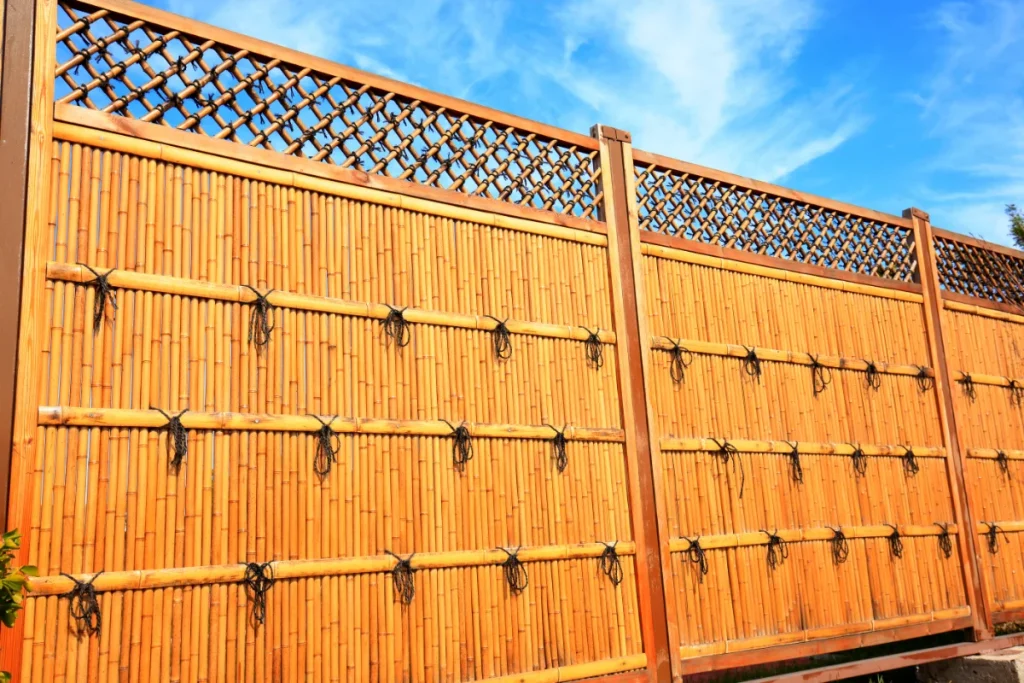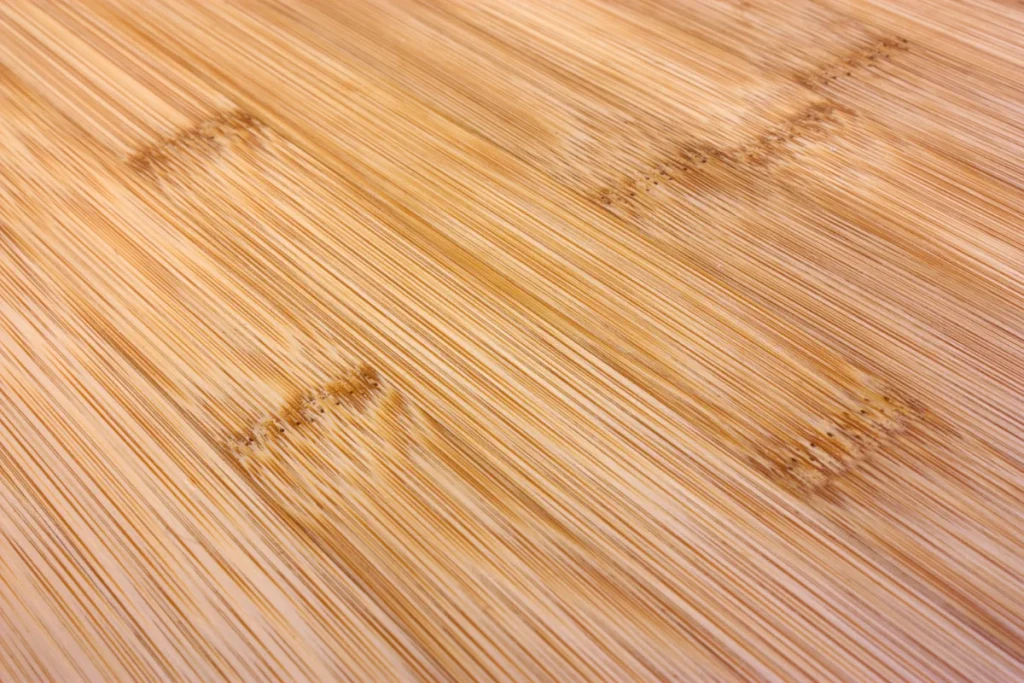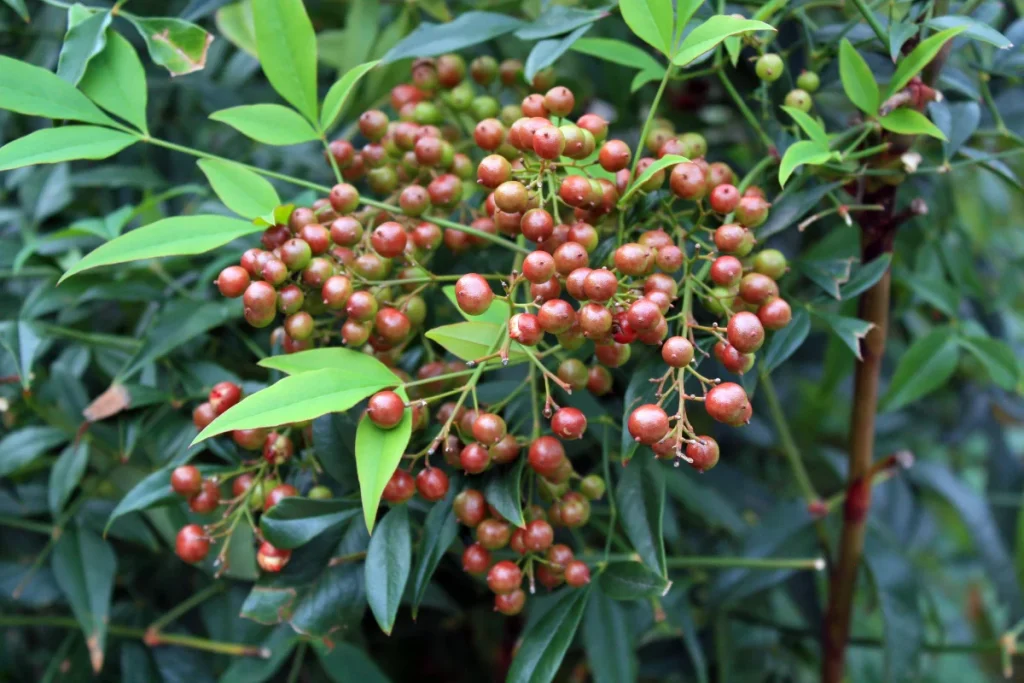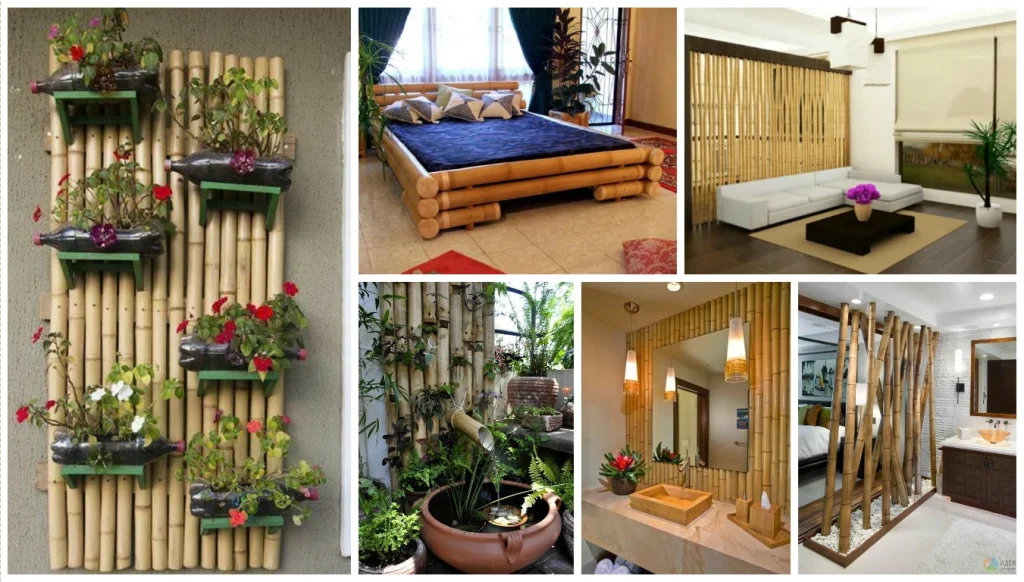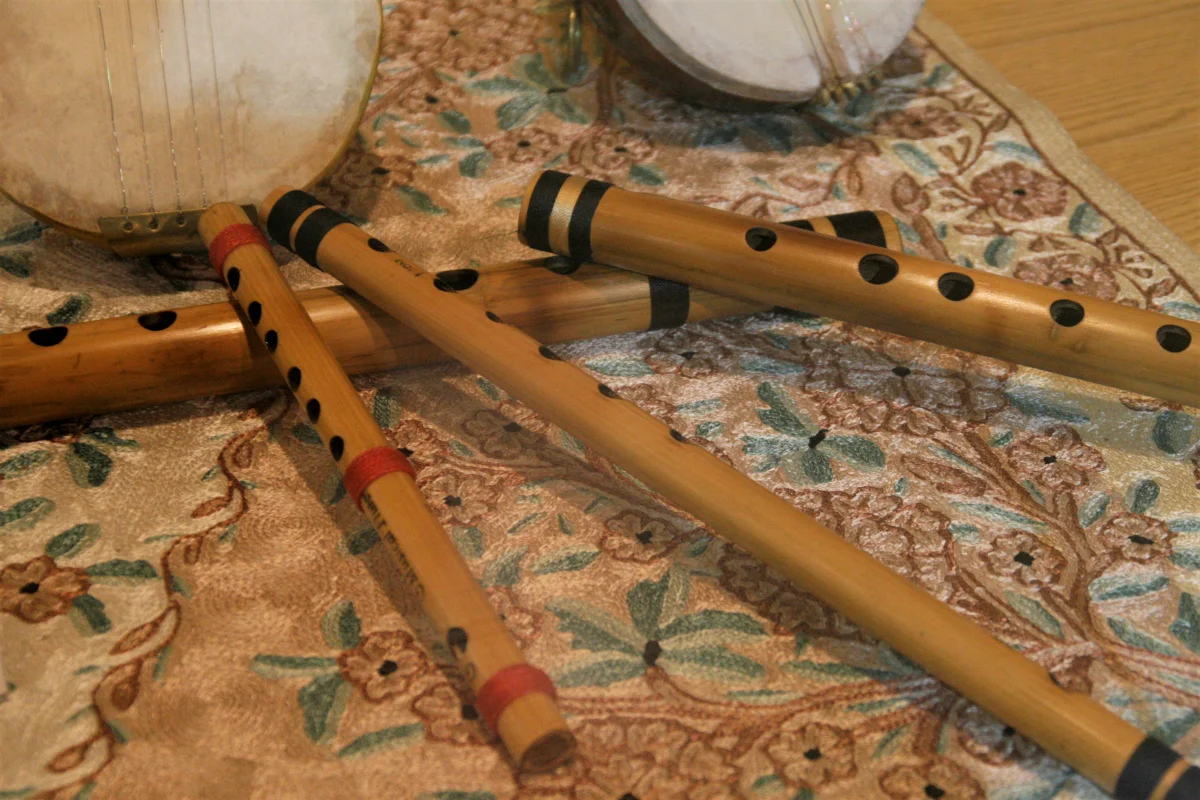
Know How Bamboo is Used for Making Music Instruments?
Introduction
In a world filled with diverse musical instruments, there’s something unique about those crafted from bamboo. This article will take you on a journey to discover the enchanting world of bamboo music instruments, from bamboo flutes that whisper melodious tunes to resonant bamboo xylophones and the ancient allure of the didgeridoo. Whether you’re a seasoned musician or someone curious about music, these instruments will captivate your senses and leave you with a profound appreciation for the artistry of bamboo.
What Makes Bamboo Special for Making Music
Bamboo has a long history of being used to craft musical instruments, and there’s a good reason for it. This incredible plant offers several qualities that make it a favorite among instrument makers:
Resonance:
Bamboo’s hollow structure allows it to produce warm, resonant tones when played, making it perfect for creating music.
Sustainability:
Bamboo is an eco-friendly choice as it grows rapidly and can be harvested without causing harm to the environment.
Versatility:
Bamboo can be shaped and tuned to create various musical instruments, from wind instruments like flutes to percussion instruments like xylophones.
Benefits of Bamboo Music Instruments
Bamboo’s Beautiful Natural Tones
Bamboo tones’ natural warmth and purity resonate with musicians and listeners, providing a unique auditory experience.
Eco-Friendly and Sustainable Features
Bamboo is a renewable resource, growing quickly and requiring minimal environmental impact, making it a responsible choice for instrument production.
Bamboo Flutes
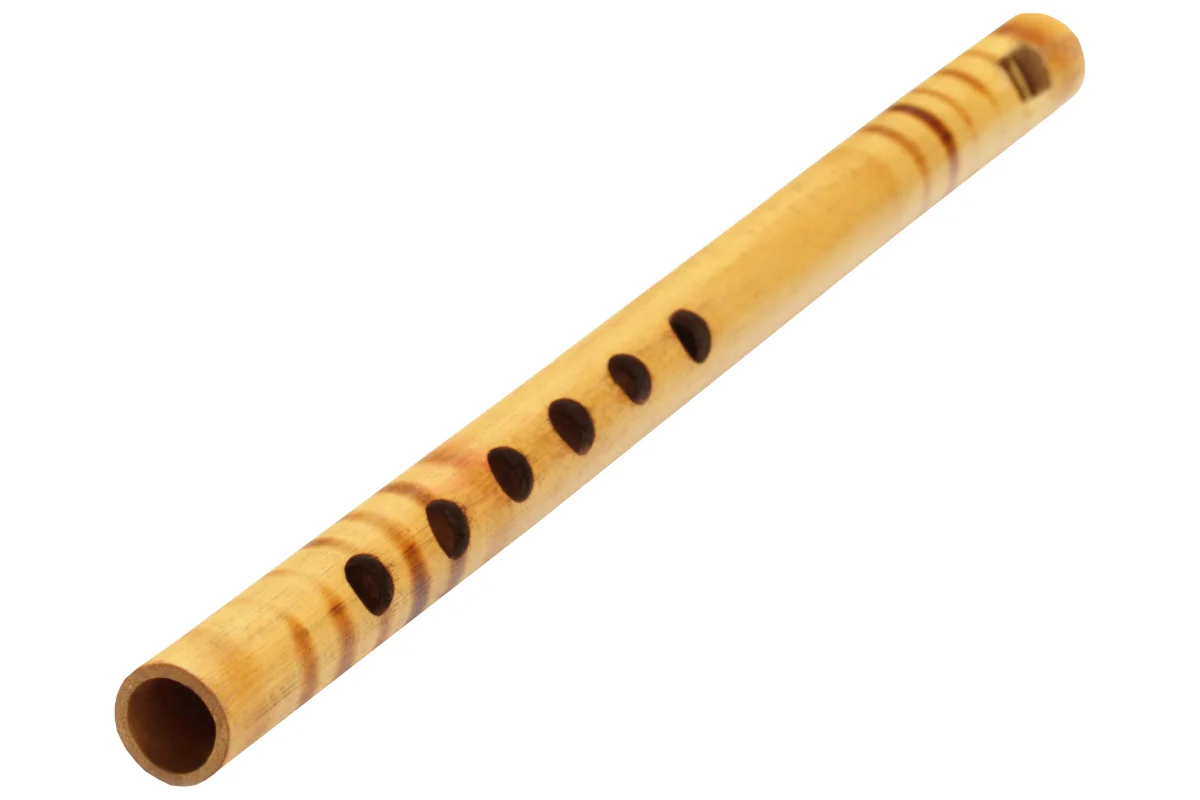
What is a Bamboo Flute?
A bamboo flute is a simple yet elegant wind instrument that produces soothing melodies. It consists of a bamboo tube with holes for finger placement and a blowhole to create sound.
History of bamboo flute:
The bamboo flute, one of the oldest and simplest musical instruments, has a rich history that spans diverse cultures across the globe. Though the exact origins and timeline can be challenging to trace, here’s an overview of the historical significance of the bamboo flute:
Ancient Origins:
The bamboo flute is believed to have existed for thousands of years. Its simple construction, using a hollow piece of bamboo with holes cut into it, made it accessible to many ancient cultures.
Eastern Origins:
In Asia, the bamboo flute has a significant historical presence. For instance, the Indian bansuri, the Chinese dizi, and the Japanese shakuhachi are iconic bamboo flutes. The bansuri has deep roots in Indian classical music, with mentions in ancient texts and scriptures. The dizi has a long history in traditional Chinese music and has undergone various developments over the centuries. The shakuhachi was introduced to Japan from China and became associated with Zen Buddhism, used in meditation and traditional Japanese music.
European and Global Spread:
The bamboo flute’s influence expanded through trade and cultural exchanges. Pan flutes made from various materials, including bamboo, were prevalent in ancient Greece and Rome. The instrument’s design and playing techniques influenced similar instruments worldwide.
Native American Flute:
In the Americas, indigenous tribes crafted flutes from river cane or other suitable types of bamboo. These flutes, often called Native American flutes, had a profound cultural significance and were used for various ceremonial and musical purposes.
Adaptations and Modern Developments:
Over time, the bamboo flute evolved in construction, design, and playing techniques. Modern bamboo flutes maintain the traditional essence but may incorporate tuning, mechanisms, and materials improvements.
Bamboo Xylophones

What is a Bamboo Xylophone?
Bamboo xylophones are a joy to behold and listen to. They are a variation of the traditional xylophone, with bamboo bars producing rich, resonant sounds. Bamboo xylophones, often called “angklung” or “rindik,” are traditional musical instruments from Southeast Asia, particularly Indonesia. They are a type of idiophone, producing sound through the instrument’s vibration rather than by strings or membranes.
Physical features
Bamboo xylophones, often known as “angklung” or “rindik” in Southeast Asia, are traditional musical instruments primarily crafted from bamboo. These instruments possess distinct physical features contributing to their unique sound and appearance. Here are the key physical attributes of bamboo xylophones:
Bamboo Tubes:
The primary components of bamboo xylophones are the bamboo tubes themselves. These tubes are cut to different lengths, each producing a specific pitch when struck. They are typically suspended or mounted in a frame or structure, allowing the tubes to resonate freely when struck.
Varied Lengths:
The bamboo tubes are precisely cut to create varying lengths, resulting in different pitches. Longer tubes produce lower pitches, while shorter tubes create higher pitches.
Different Diameters:
The diameter of the bamboo tubes can also impact the sound and resonance. Thinner tubes may produce higher, more delicate tones, while thicker tubes may create deeper, resonant tones.
Tuning:
Bamboo xylophones are meticulously tuned by adjusting the tubes’ length and sometimes the thickness to achieve specific pitches. Skilled artisans and musicians carefully craft and tune the bamboo to ensure a harmonious scale.
Mounting Frame:
The bamboo tubes are often mounted on a frame or structure made of bamboo or other materials. The frame supports the tubes, allowing them to vibrate and resonate without being hindered.
Decorative Elements:
Some bamboo xylophones may feature decorative elements, such as carvings or embellishments on the bamboo tubes or the frame. These designs often add cultural and aesthetic value to the instrument.
Mallets:
Bamboo xylophones are played using mallets or beaters, typically made of wood or bamboo. The mallets vary in size and hardness, influencing the sound when striking the bamboo tubes.
Bamboo Didgeridoos
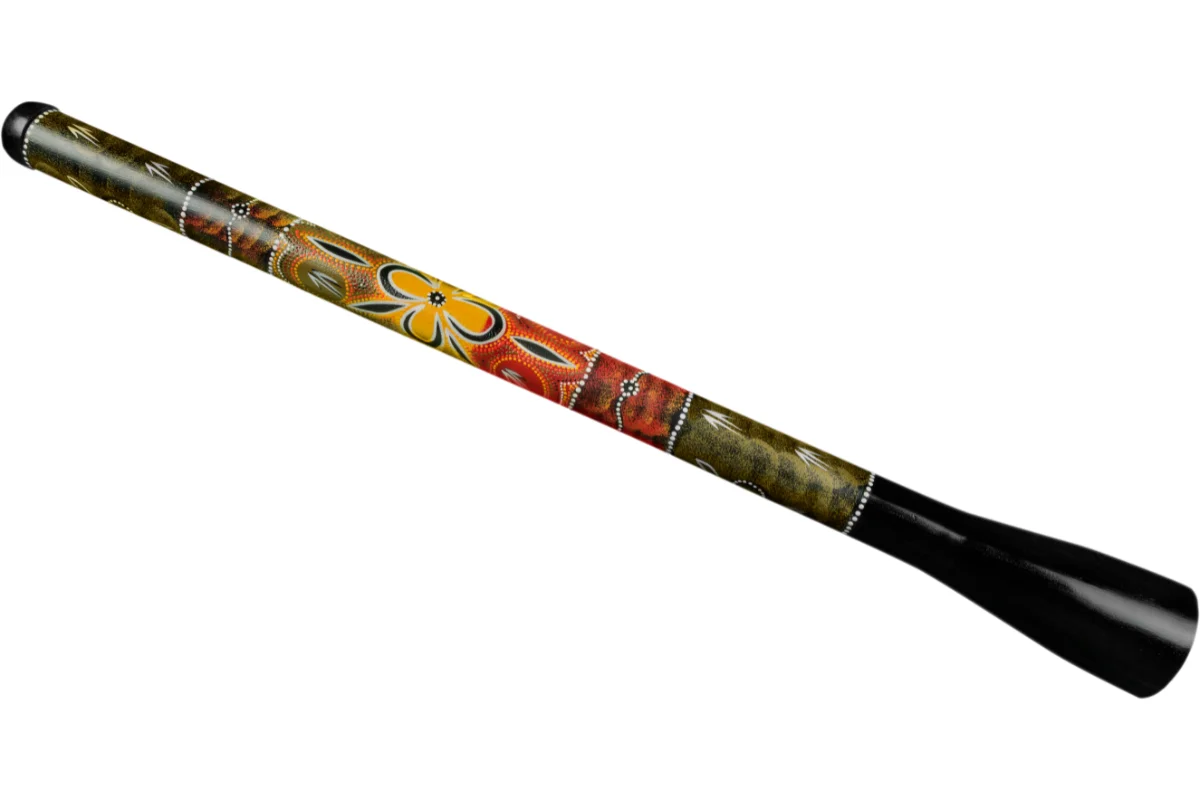
What is a Bamboo Didgeridoo?
The didgeridoo is an ancient Australian wind instrument known for its unique, droning sound. Bamboo didgeridoos are a captivating variation of this instrument.
Crafting Bamboo Didgeridoos
Bamboo didgeridoos are skillfully crafted to replicate traditional wooden versions. They are elongated bamboo tubes that produce a mesmerizing drone when played.
Playing Bamboo Didgeridoos
Playing the didgeridoo involves circular breathing, a technique that allows for continuous sound production. It’s a fascinating skill that has been handed down through generations.
Where Did the Didgeridoo Come From?
The didgeridoo has a rich cultural history among Aboriginal Australians. It has been used in ceremonies and storytelling for thousands of years.
Bamboo Percussion Instruments
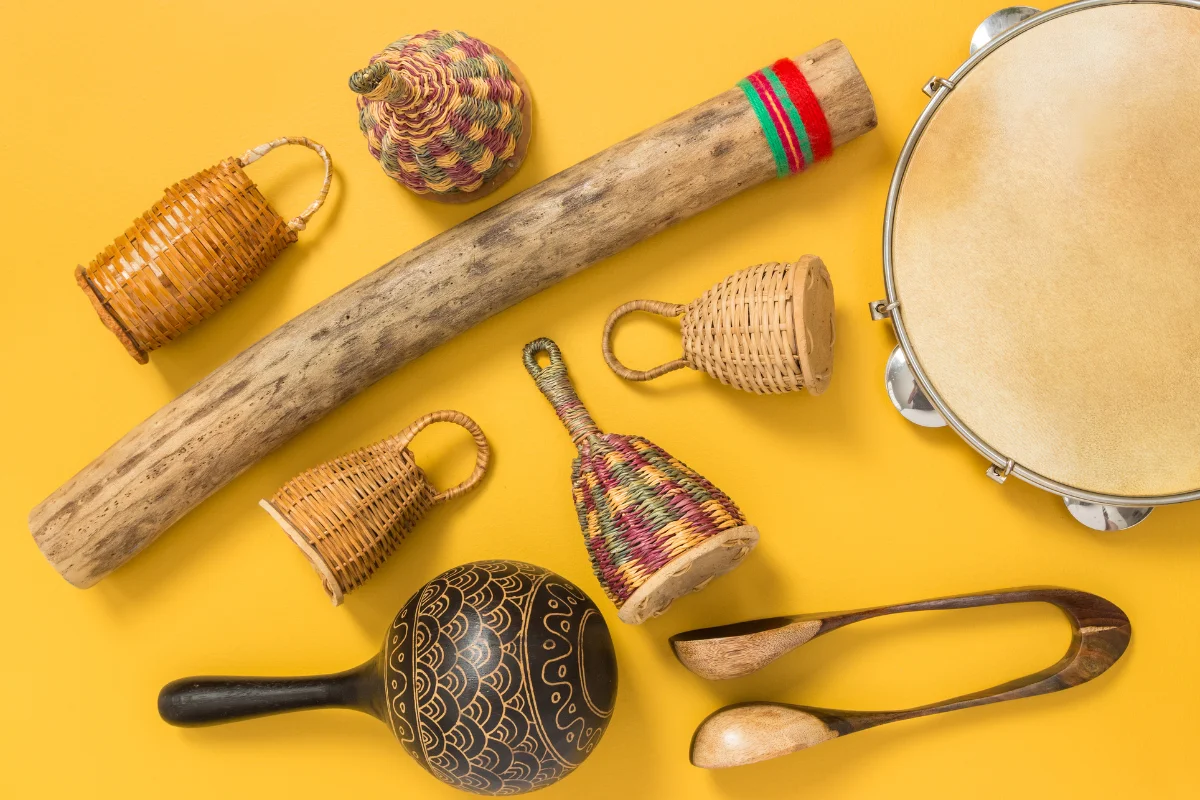
What are Bamboo Percussion Instruments?
Bamboo is also an excellent material for crafting percussion instruments like drums, rattles, and shakers. These instruments add a unique texture to the music.
Crafting Bamboo Percussion Instruments
Due to its resonant properties, bamboo is a versatile choice for crafting percussion instruments. It’s often used to create drum bodies and various types of rattles.
Playing Bamboo Percussion Instruments
Playing bamboo percussion instruments involves creating rhythm through striking, shaking, or scraping. These instruments offer a lively and dynamic aspect to music.
Popular Types of Bamboo Percussion Instruments
Some well-known bamboo percussion instruments include bamboo claves, bamboo rainsticks, and bamboo frame drums, each with a distinct sound and character.
Bamboo Rainstick
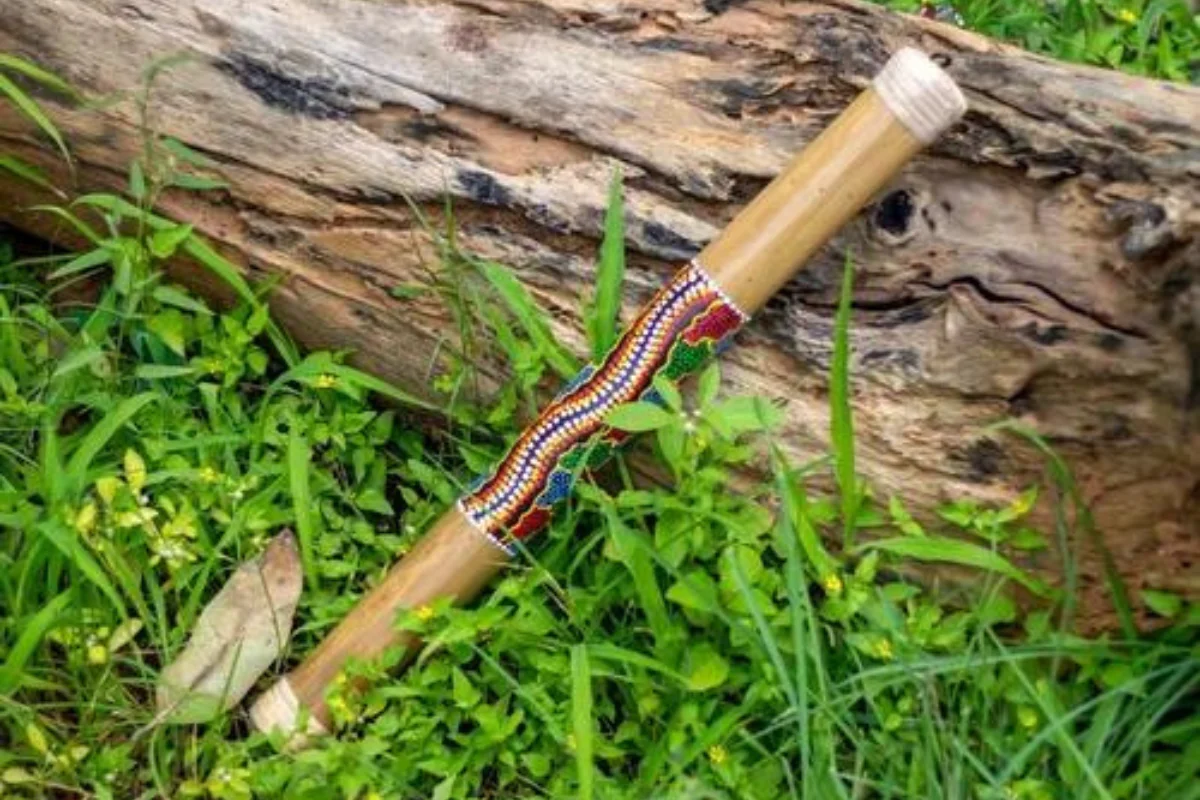
A bamboo rainstick is a percussion instrument that imitates the sound of rain falling when tilted. The instrument’s design typically consists of a hollowed-out piece of bamboo or a cylinder filled with small objects, such as pebbles, beans, seeds, rice, and nails or pins arranged inside.
Bamboo Lyre Harp
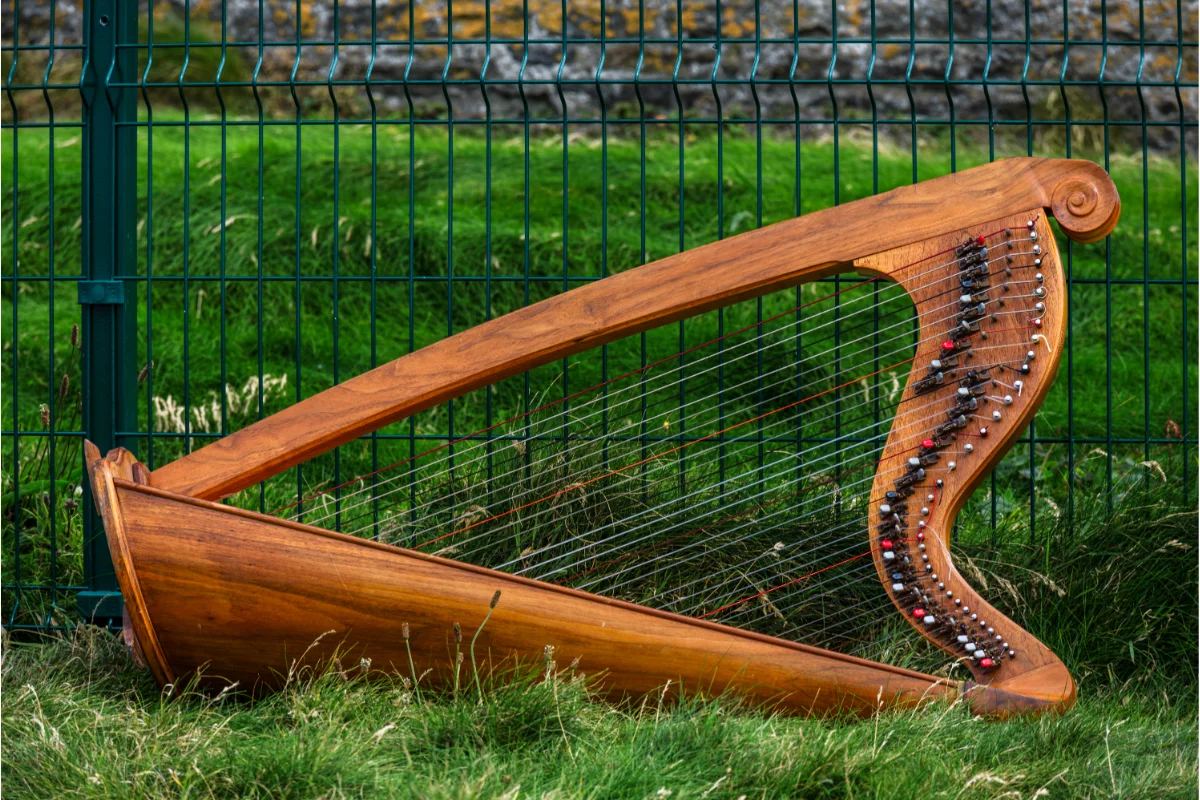
The bamboo lyre harp is a musical instrument that merges the traditional lyre harp design with bamboo as a construction material. With its characteristic U-shaped body and strings, the bamboo lyre harp gets a unique touch when crafted from bamboo, which is known for its strength, flexibility, and resonance.
These harps shape and carve bamboo into the curved frame that holds the strings. The strings, usually made of nylon or metal, are attached to both ends of the U-shaped frame and can vary in number, typically ranging from 7 to 16 strings. The tension of these strings produces distinct musical notes when plucked.
Bamboo’s natural qualities add a distinctive element to the instrument. Its resonance and tonal qualities contribute to a warm and natural sound. The bamboo lyre harp’s design often includes intricate carvings or engravings, enhancing its visual appeal.
Bamboo Fiddle (Jinghu)

The bamboo fiddle, also known as “Jinghu,” is a traditional Chinese string instrument. It is distinctively crafted from bamboo, contributing to its unique sound and appearance.
The jinghu typically features a cylindrical bamboo body that serves as its resonator. The soundbox is covered with a snakeskin or other membrane, which helps to amplify and enrich the instrument’s sound. It has two strings made of silk or metal, which are traditionally played with a bow.
The construction of the bamboo fiddle involves careful craftsmanship. The cylindrical body must be finely carved and hollowed out to produce the desired resonance. Bamboo’s properties contribute to the instrument’s distinctive timbre, delivering a bright and resonant tone.
The jinghu is often used in traditional Chinese music, including regional operas and folk music. Its versatility allows it to express a range of emotions and musical styles, making it an essential instrument in Chinese classical and folk music ensembles.
Bamboo Ukulele
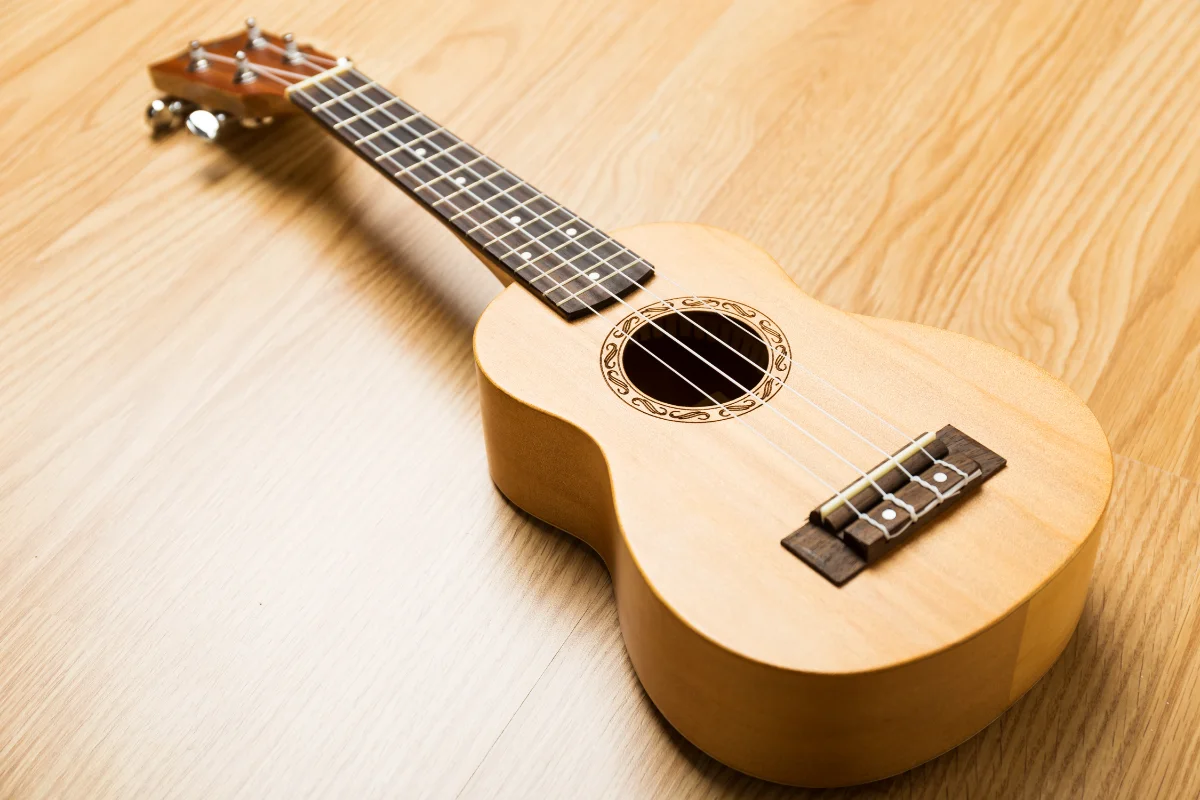
A bamboo ukulele is a variation of the classic ukulele, a small stringed instrument from Hawaii. What distinguishes it is its construction, which primarily uses bamboo for the body, neck, and sometimes even the fretboard.
Crafting a bamboo ukulele involves shaping and hollowing bamboo to form the body, similar to traditional wooden ukuleles. Bamboo’s unique properties contribute to its resonance and aesthetic appeal. Its lightweight nature also makes the ukulele easy to handle and suitable for travel.
The fretboard and bridge, which hold the strings, can also be made from bamboo or another type of wood. Metal or nylon strings are commonly used, and depending on the player’s preference, they offer different tonal qualities.
Bamboo ukuleles produce a warm and mellow sound, similar to their wooden counterparts. The bamboo’s acoustic qualities lend a distinct character to the instrument’s tonal output.
Caring for Bamboo Instruments
How to Take Care of Your Bamboo Instruments
Proper care ensures the longevity and quality of bamboo instruments. Cleaning, maintenance, and storage are key aspects of instrument care.
Tips for Preserving the Sound Quality
Maintaining the resonance and tone of bamboo instruments involves protecting them from moisture, extreme temperatures, and physical damage.
Common Mistakes to Avoid
It is crucial for preservation to avoid common mistakes, such as exposing bamboo instruments to direct sunlight or subjecting them to sudden temperature changes.
Conclusion
Bamboo is a versatile and eco-friendly material used to craft a wide array of items, from musical instruments like the jinghu and ukulele to outdoor furniture, wind chimes, and water garden features. Its natural properties, including strength, resonance, and aesthetic appeal, contribute to the uniqueness of these products.
Bamboo’s sustainable nature and adaptability make it a favored choice for those seeking environmentally conscious and artistically distinct options in various domains. Whether in music, home decor, or outdoor settings, the use of bamboo showcases a harmonious blend of functionality, aesthetics, and sustainability.

